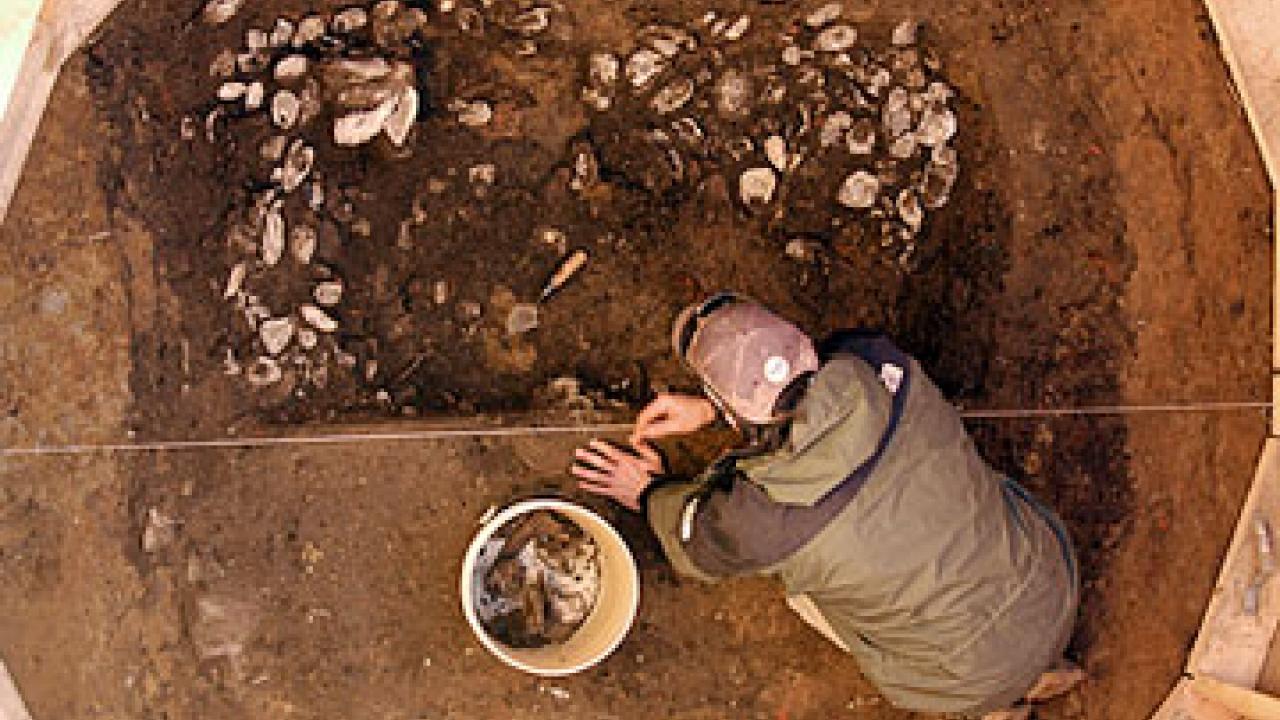Oyster shells dumped in a well four centuries ago are shedding new light on the crippling drought that nearly wiped out the English settlement at Jamestown, Va., in its early years.
"We were able to demonstrate that the oyster shells record this huge drought," said Howard Spero, professor of geology at UC Davis and co-first author on the study, which is published online this week by the journal Proceedings of the National Academy of Sciences.
Contemporary records show that a drought that began in 1606 gripped the colony from its founding in 1607 to 1612. The James River became too brackish to drink, and from 1609 the colonists dug wells in search of fresh water. Old wells were filled with trash, including lots of oyster shells.
Co-first author Juliana Harding, research scientist at the Virginia Institute of Marine Science, approached Spero for help in studying oyster shells collected from a recently discovered well. Spero's laboratory uses oxygen isotopes in fossils to study past climate.
Mollusks such as oysters incorporate different proportions of the isotopes oxygen-18 and oxygen-16 into their shells as they grow. Variations in the ratio of oxygen-18 to oxygen-16 in annual growth layers give a measure of the animal's growth rate, as well as temperature and salinity during its lifetime. The ratios in a shell also change with the seasons, making it possible to determine the time of year the oysters were harvested.
The results show that in the early 17th century, the river by the Jamestown settlement was brackish year-round. Ironically, that would have allowed oysters to thrive much further upriver than they do today, providing plenty of food for the colonists at the same time that they were desperately short of fresh water, Spero said.
Spero, Harding and colleagues studied three layers of oyster shells from the excavated well, thought to date from 1611. One layer corresponded to oysters collected in the winter of 1611-1612, and two to oysters collected in spring or summer, 1612. One of the layers of oysters has a different profile than the other two, suggesting that these oysters were taken from a different location -- perhaps from Fort Algernoune downriver near the Chesapeake Bay.
The other authors on the paper are Roger Mann, professor of marine science, Virginia Institute of Marine Science; and assistant professor Gregory Herbert and graduate student Jennifer Sliko, Department of Marine Sciences, University of South Florida.
About UC Davis
For more than 100 years, UC Davis has engaged in teaching, research and public service that matter to California and transform the world. Located close to the state capital, UC Davis has 32,000 students, an annual research budget that exceeds $600 million, a comprehensive health system and 13 specialized research centers. The university offers interdisciplinary graduate study and more than 100 undergraduate majors in four colleges — Agricultural and Environmental Sciences, Biological Sciences, Engineering, and Letters and Science. It also houses six professional schools — Education, Law, Management, Medicine, Veterinary Medicine and the Betty Irene Moore School of Nursing.
Media Resources
Andy Fell, Research news (emphasis: biological and physical sciences, and engineering), 530-752-4533, ahfell@ucdavis.edu
Howard Spero, Geology, (530) 752-3307, spero@geology.ucdavis.edu
Juliana Harding, Virginia Institute of Marine Science, (804) 684-7302, jharding@vims.edu
